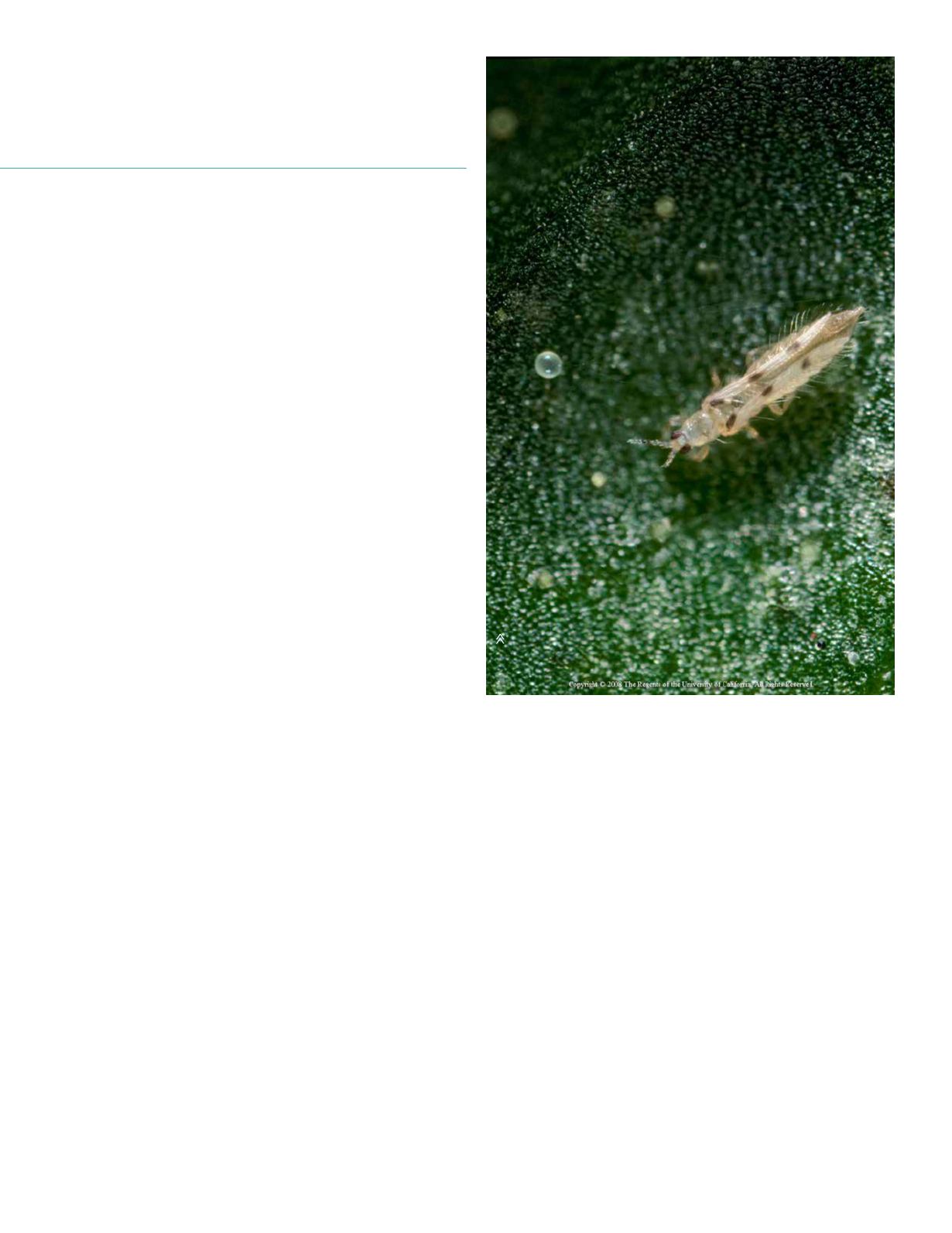
MAY | JUNE 2015
Almond Facts
39
Webspinning Spider Mite
Management in Almonds
As summer approaches almond growers need to be
monitoring for webspinning spider mites. The most
common species during the summer are Pacific and
twospotted spider mite, though on occasion strawberry
spider mite can be found. As adults, all three mites look
and behave similarly, even though control of Pacific spider
mite is more difficult to control.
Webspinning spider mites overwinter in the orchard under
rough bark and ground litter. During the spring, usually
in March and April, migration will occur from these
places into the lower areas of the tree. These early-season
populations are typically small, do not reproduce quickly,
and often become prey to early-season natural enemies.
However, as temperatures warm in late May through
September, the populations increase rapidly, particularly
if natural enemies are absent. In favorable conditions, a
lifecycle can be completed in seven to 10 days, with eight
to 10 generations a year.
Spider mites damage leaves by sucking cell contents
and damage initially appears as a light stippling. As
populations increase, mites and their eggs become more
visible, and eventually "webs" will appear around spurs
and leaves. Leaves with high populations will fall from
the tree, reducing carbohydrate production. If leaf
loss becomes severe there is a potential for crop loss the
following year. Spider mites are most problematic in
orchards that are dusty or where the trees are stressed.
Stressing factors can include insufficient irrigation, nutrient
deficiencies, or excessive crop load.
The most important factor in spider mite management is
biological control. When natural enemies are abundant,
miticides are not needed. When natural enemies are
absent, control with even the best miticides can be short-
lived. The goal is to find a balance that relies primarily on
natural enemies supplemented by miticides as needed.
The most important predators of spider mites are
sixspotted thrips, western predatory mite, and the spider
mite destroyer. Sixspotted thrips are highly migratory and
can quickly control spider mite populations. Over the past
few years it has become the predominant mite predator in
California almonds. The western predatory mite- although
similar in size as spider mites- is whitish in color and often
moves quickly across leaves. The spider mite destroyer is a
small black ladybug that feeds exclusively on spider mites.
It is found primarily during the second half of the season.
These predators are very effective in controlling mite
populations, and in orchards with high predator-to-prey
ratios, treatment may not be required. Growers who want
to conserve and promote predators should avoid broad
spectrum insecticides, particularly early in the season, and
avoid prophylactic and preventative miticide applications
that do not provide enough food for mite predators to
become established in the spring.
In determining when to time the first mite spray
application, a presence/absence monitoring protocol has
been developed. Monitoring should occur weekly, and prior
to mid-June should focus on hot-spots within the orchards.
After mid-June, the whole orchard should be randomly
sampled.
When sampling trees, 15 leaves from a minimum of five
trees should be selected. Leaves should be randomly chosen
from the inside and outside of the canopy. Examine both
sides of the leaves looking for pest mites and predators.
Note the number of leaves on each tree with pest mites and
their eggs, and the number of leaves with predators. There
is no need to count the mites. Once completed, compare
the numbers with the guidelines provided in the "Don't
Six-spotted thrips provide excellent biocontrol for web-spinning
spider mites. They are the predominant predator within the San
Joaquin Valley. Photo credit: UC ANR.
Continued on next page »


